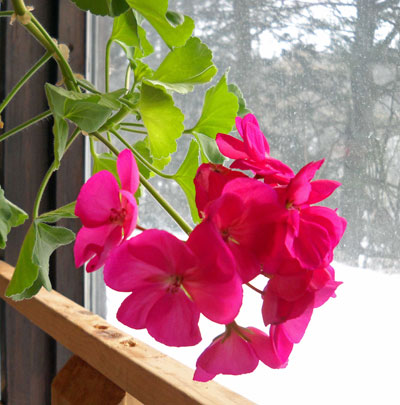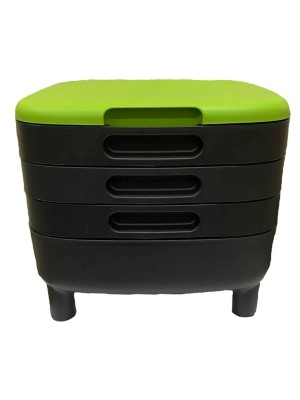Revitalize Your Houseplants with Worm Castings
A few years ago a young woman asked me for help with her large, potted acacia tree. “I’ve had it for several years, and it was doing fine until recently. Now, the leaves are yellowing and dropping, and it’s just not thriving.”
“Let me guess, I’ll bet you’ve taken good care of it, and have been feeding it with liquid fertilizer, but despite your best efforts, it’s still suffering, correct?”
“Exactly!” she exclaimed.
 I knew immediately what was wrong. Handing her a 25-pound bag of dried worm castings and a 20-quart bag of potting soil, I instructed her to re-pot the tree in a 50/50 mix of the two, add the recommended amount of her liquid fertilizer, water it well, and call me in a month.
I knew immediately what was wrong. Handing her a 25-pound bag of dried worm castings and a 20-quart bag of potting soil, I instructed her to re-pot the tree in a 50/50 mix of the two, add the recommended amount of her liquid fertilizer, water it well, and call me in a month.
Just about thirty days later, instead of calling, she came to see me. With a huge smile, she excitedly exclaimed, “My acacia is growing new, bright green leaves! What’s up with that?”
In addition to the nutrients (NPK) found in water-soluble fertilizers, all plants require a range of other nutrients and beneficial bacteria to maintain their health and vigor. In nature, these are delivered by the action of bacteria, fungi, microbes, earthworms, insects, and other tiny creatures that convert soil minerals into plant food.
 But in a container, it is just a matter of time until secondary nutrients and vital trace minerals are depleted — even if you use a top-quality planting mix. Once this happens the plant fails to thrive.
But in a container, it is just a matter of time until secondary nutrients and vital trace minerals are depleted — even if you use a top-quality planting mix. Once this happens the plant fails to thrive.
Worm castings can replenish all of these nutrients. Containing more than 150 plant vitamins and trace minerals, worm poop also has beneficial enzymes, hormones, and bacteria that plants crave. In addition, the crumbly structure of castings helps promote good soil aeration.
To boost houseplants in decline, simply re-pot in a blend of worm castings and good potting soil. A 50:50 ratio is ideal, but you can get by with as little as 25 percent worm castings. For healthy plants, sprinkle a tablespoon or two of worm castings on the soil surface every other month. Don’t forget to feed regularly with liquid fertilizer.
In my sunroom, I have a 14-year-old geranium that gets top-dressed with worm castings about six times a year. It always has bright green foliage and is rarely without a blossom.
Dried worm castings can be purchased at most garden centers. For superior, potent, biologically-active castings, make your own with a worm composter.
Learn more about Worm Composting over in the Gardener’s Supply advice library.
Print this Article:
Get the Dirt
Stay up to date on new articles and advice. Please fill out the information below.
